This post contains the second round of my headphone impressions from the 2014 Consumer Electronics Show in Las Vegas, consisting of Audio-Technica, STAX, Beyerdynamic, and Polk Audio. For part 1 of my impressions, featuring Klipsch, Phiaton, Westone, and others, see here.
Audio-Technica
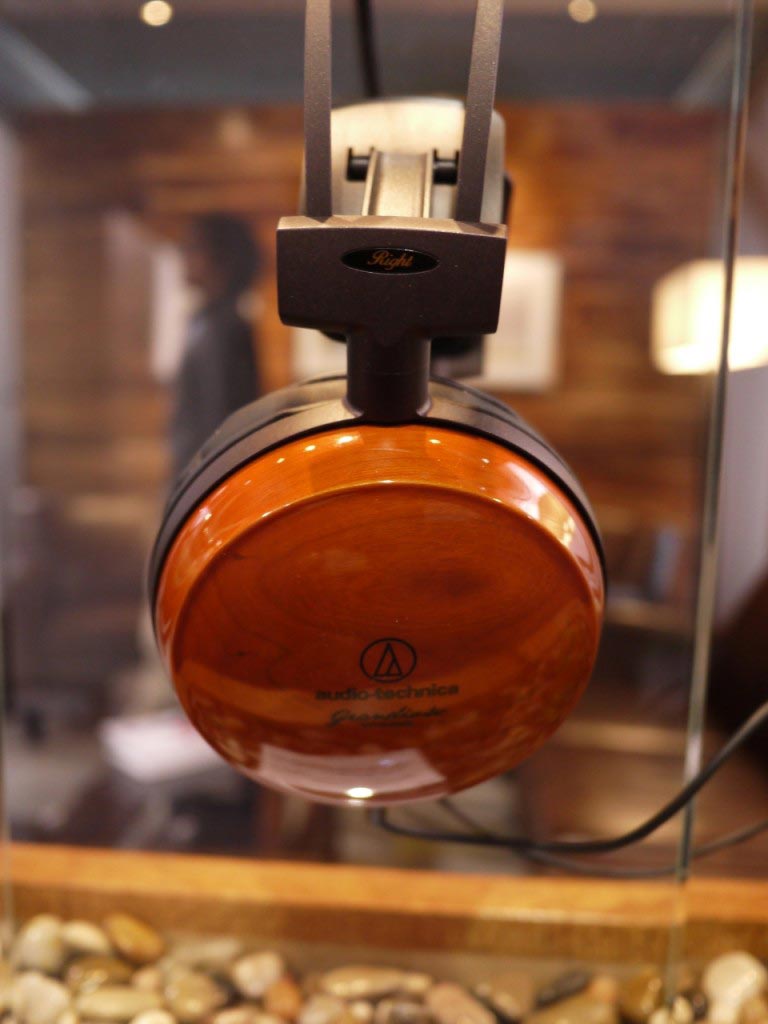
Audio-Technica, as always, had dozens of models on display but the release they seemed to be pushing the most was the new Sonic Fuel in-ear earphones, one of which I tried and even got a pair to take home. I sampled a few of their reasonably-priced portable headphones as well, though none stood out as particularly noteworthy.
Audio-Technica also had their high-end wooden models on display, including the ATH-ESW9A (which I’ve already reviewed here), the ATH-W5000, and the beyond-gorgeous ATH-W1000X. Unfortunately these were hooked into an unknown source and could not be disconnected for a proper demo with my own equipment, but they sure did look good.
Audio-Technica Sonic Fuel CKX5iS
Audio-Technica’s new Sonic Fuel line was announced last year and consists of the ATH-CKX5, ATH-CKX7, and ATH-CKX9 models, as well as their –iS (e.g. CKX5iS) headset counterparts. The –iS headsets utilize 1-button inline remotes and analog volume controls. I personally rather like this setup – digital volume controls may be better for fidelity but almost always work only with Apple devices. For a dynamic-driver headset, an analog volume control makes sense and allows the earphones to work with a wider range of devices.
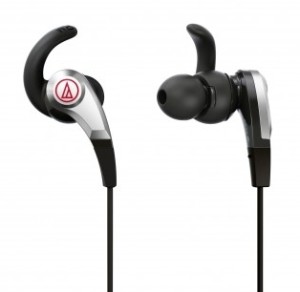
 The Sonic Fuel IEMs are marketed as sports earphones, available in a myriad colors, and range in price from $45 to $100. The big selling point of these earphones is the pivoting nozzle. We’ve seen this before with VSonic earphones, for example the GR07 model I had with me at the show , but in the Audio-Technica implementation the nozzles have greater freedom and pivot more easily, leading to a very compliant fit. I got to try (and take home) the entry-level CKX5iS headset and can confirm that with the ear fins (which come in three different sizes) and adjustable nozzles the fit is very much locked-in. They also sound pretty good for $50 – enhanced but pretty clean bass, slightly warm tone, some treble sparkle, and good clarity and detail. These are definitely going to get a full review.
The Sonic Fuel IEMs are marketed as sports earphones, available in a myriad colors, and range in price from $45 to $100. The big selling point of these earphones is the pivoting nozzle. We’ve seen this before with VSonic earphones, for example the GR07 model I had with me at the show , but in the Audio-Technica implementation the nozzles have greater freedom and pivot more easily, leading to a very compliant fit. I got to try (and take home) the entry-level CKX5iS headset and can confirm that with the ear fins (which come in three different sizes) and adjustable nozzles the fit is very much locked-in. They also sound pretty good for $50 – enhanced but pretty clean bass, slightly warm tone, some treble sparkle, and good clarity and detail. These are definitely going to get a full review.
MSRP: $49.95 | Manufacturer’s page
STAX

I’m almost ashamed to say that I’ve never heard a STAX headphone before, but I will now listen to them every chance I get. At CES this Japanese Hi-Fi powerhouse had set up a very nice listening booth staffed with some of the most knowledgeable people I met at the show. I probably spent an hour in the STAX booth, and the staff were only too happy to hook up the sources I brought with me, discuss the merits of different test tracks, and suggest the best value STAX headphone/amp combinations for me to try.
STAX SR-307 and SR-407 Lambda
These were the first two STAX sets I tried. I think I was attracted by their rather unique aesthetic – these are really not the type of headphone your friends will be impressed with. No matter, however, as they perform very well. The sound is open and airy, and the soundstage seems limitless and entirely out-of-the-head. I did not get into the differences between these two as they sounded pretty similar to each other. The entry-level combination suggested by STAX was the STAX SRM-006tS amp + the SR-307 headphone, which runs around $1700 in total, just a bit more than a Sennheiser HD800. Keep in mind, however, that the HD800 will still need an amp to power it. Looks aside, I definitely feel this STAX combo gives any of the dynamic-driver headphones I’ve heard (which, admittedly, is far from all of them) a run for their money in sound quality and especially value. I would be quite content if this combo were to replace my current HD580-based home listening setup.
SR-307 MSRP: $425.00 | Manufacturer’s page
SR-407 MSRP: $520.00 | Manufacturer’s page
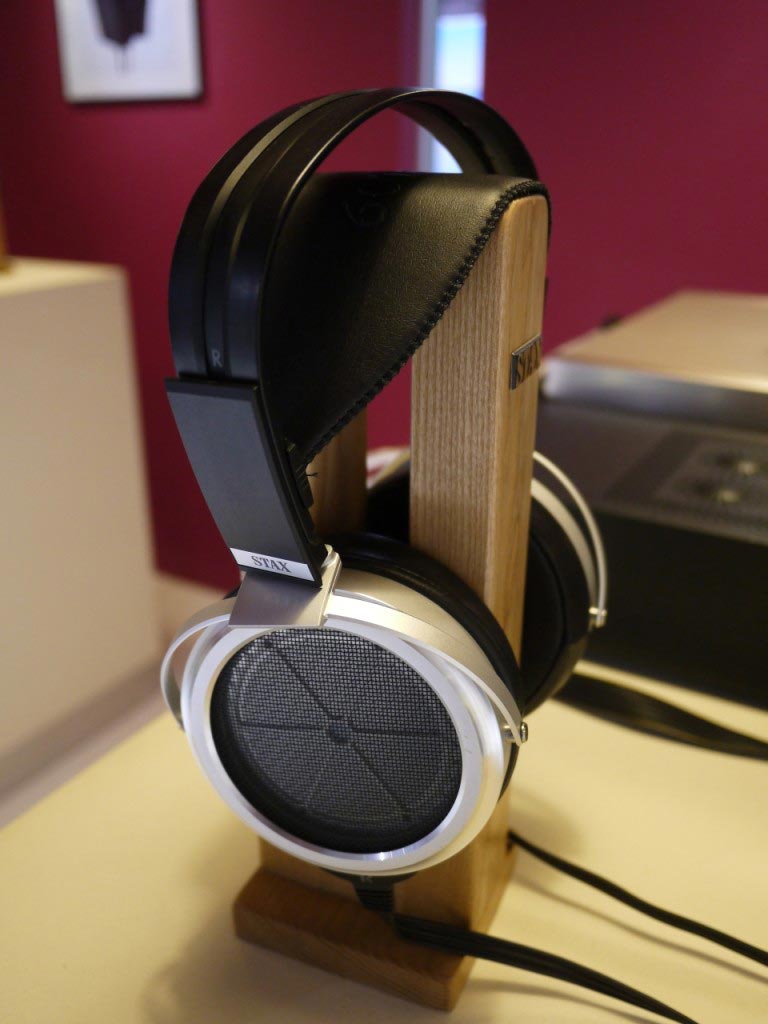
STAX SR-009 and STAX SR-007MK2
The next STAX sets I tried were the SR-009 and SR007MK2. For me the SR-009 is now the Holy Grail – I have never heard anything that sounds as good, and that includes the HD800 that Sennheiser was demoing a few booths over (and which I’ve heard in the past as well). The transparency, soundstaging, imaging, and sheer resolution of the STAX were incredible, and they somehow did all this without butchering low bitrate tracks. The soundstage, as with the Lambda, was completely without confine, as if the headphone were somehow able to fill the entire listening room.
I tried the SR007MKII next. Much like the SR-009, these provided a great listening experience but seemed a touch warmer, darker, and less quick and “detailed”. I ended up gravitating towards the brighter SR-009. Overall, it seemed like both of these headphones extracted the very best my sources and audio files had to give, and then just asked for more. I sincerely hope that I will get a chance to hear these wonderful headphones again sooner rather than later.
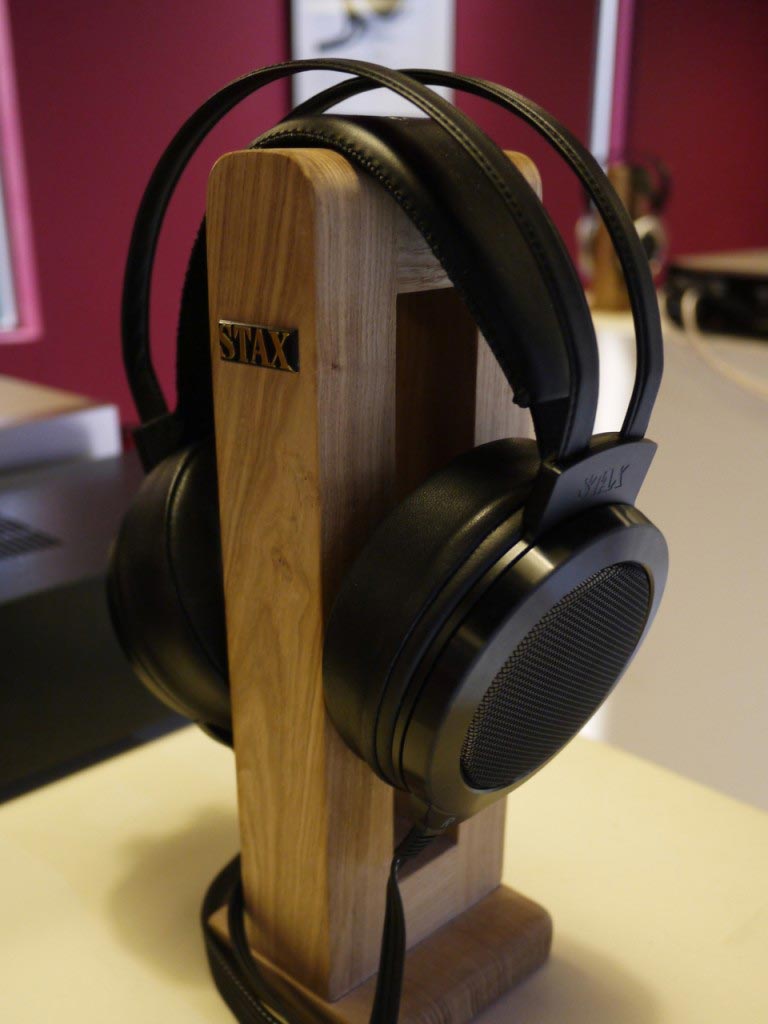
SR-009 MSRP: $4450.00 | Manufacturer’s page
SR-007MK2 MSRP: $2350.00 | Manufacturer’s page
STAX SR-003MK2
The SR-003MK2 is the latest generation of portable STAX. It is an in-ear model which utilizes extremely shallow and soft rubber eartips. The earpieces have some ability to pivot on the metal headband but I can still foresee many listeners having problems fitting these. Only medium eartips were available (although small and large sizes are said to exist) and I’m not sure I got the best possible seal, which might explain the diminished bass depth compared to the other STAX sets. It could also be explained by the smaller size of the SR-003’s transducers. The mids were still extremely clear and transparent, and the sound was open and airy in a way that surpasses conventional IEMs. I dare say I haven’t heard anything that sounds quite like this in an IEM form factor since the oddball Yuin OK1. The treble, like the bass, seemed a little lacking compared to the full-size SR-407.
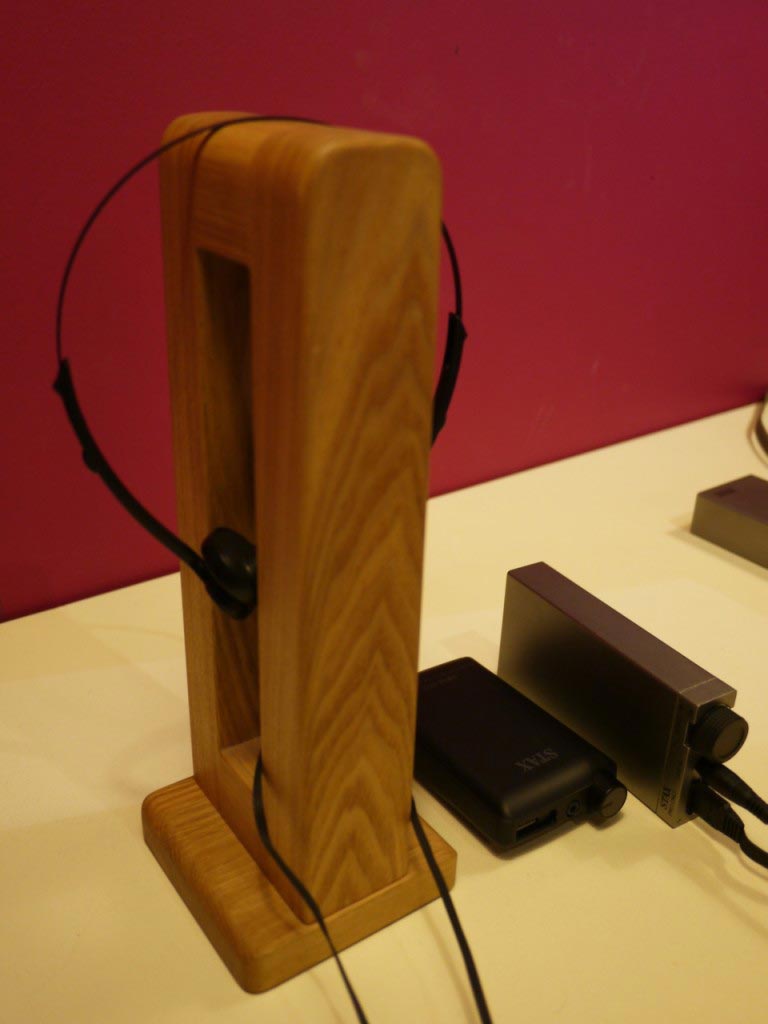
The SR-003MK2 units are sold in the US together with a STAX portable amplifier. There is a new portable amp coming out for these that’s said to provide superior audio quality compared to the current one. There will also be a higher-end version that features a built-in DAC for PC, Mac, and even Apple iPhone. This new unit is designed to magnetically attach itself to the iPhone and grab the digital stream through the Apple Lightning connector. The demonstration was certainly very impressive.
All in all, the SR-003MKII provides a very clear and spacious sound as far as IEMs go but with a necessity to carry the large amp/DAC unit and zero isolation, their appeal is surely limited.
MSRP: $350.00 | Manufacturer’s Page
 Individual product impressions aside, what I truly love about STAX is the no-frills approach to audio. There seems to be nothing that’s too ridiculous in pursuit of audio quality. A headphone that looks like a heat radiator from the 1970s? Sure, let’s make it brown! A flagship that makes the Sennheiser HD800 seem downright cheap in comparison? No problem. A portable set that looks like an old Sony Walkman headphone and requires a 1.5lb DAC/Amp at all times? Done.
Individual product impressions aside, what I truly love about STAX is the no-frills approach to audio. There seems to be nothing that’s too ridiculous in pursuit of audio quality. A headphone that looks like a heat radiator from the 1970s? Sure, let’s make it brown! A flagship that makes the Sennheiser HD800 seem downright cheap in comparison? No problem. A portable set that looks like an old Sony Walkman headphone and requires a 1.5lb DAC/Amp at all times? Done.
Just wonderful.
Beyerdynamic
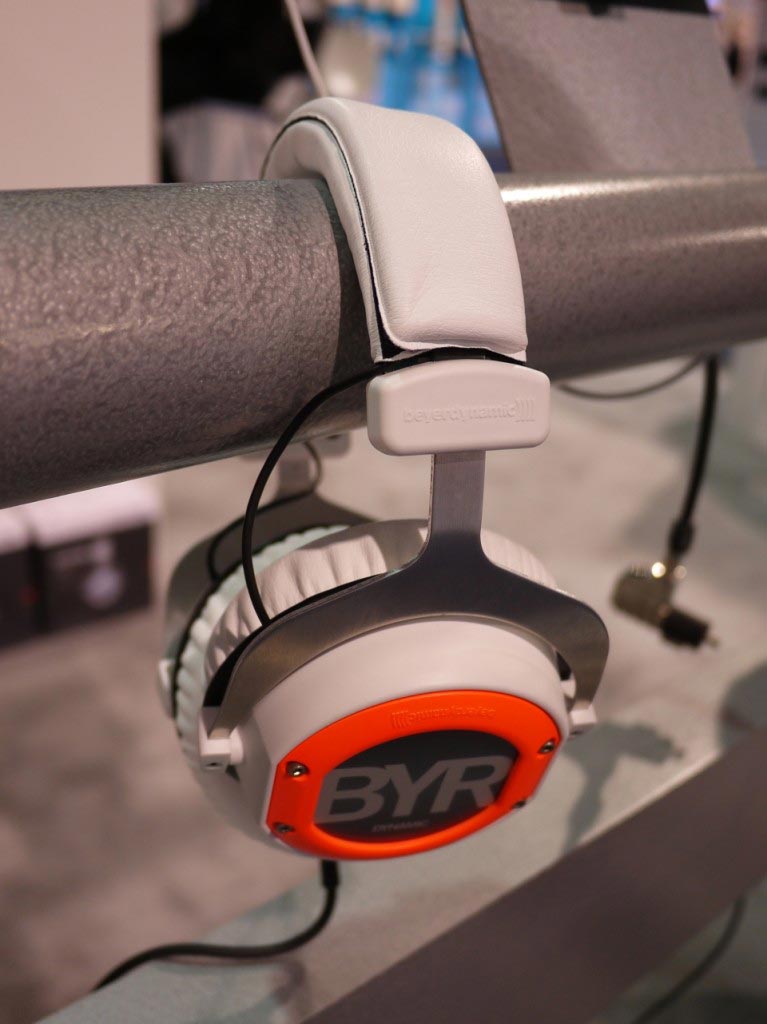
Beyerdynamic had a number of their headphones refreshed last year, for example the DT51P, but I was more interested in trying some of the sets I had missed altogether, namely the Custom One Pro. A couple of new IEMs were on display as well, though no one could tell me much about them.
Beyerdynamic Custom One Pro
I had been meaning to try the Custom One Pro for a while. At the Beyerdynamic booth these were available in a number of different color combinations, in order to really drive home the “custom” aspect. I was immediately impressed with the build quality – like most things Beyer, these are built to last.
The sound was a little lacking in control/tightness even on the least bassy setting and had the ability to get rather bassy when tuned via the adjustable vents. They were very comfortable and extremely well-made, though. For those who will listen to these on the more “balanced” settings there are likely better options but for fans of big bass there’s value here with the <$200 street price.
MSRP: $239 | Manufacturer’s page
Beyerdynamic DX 160 iE
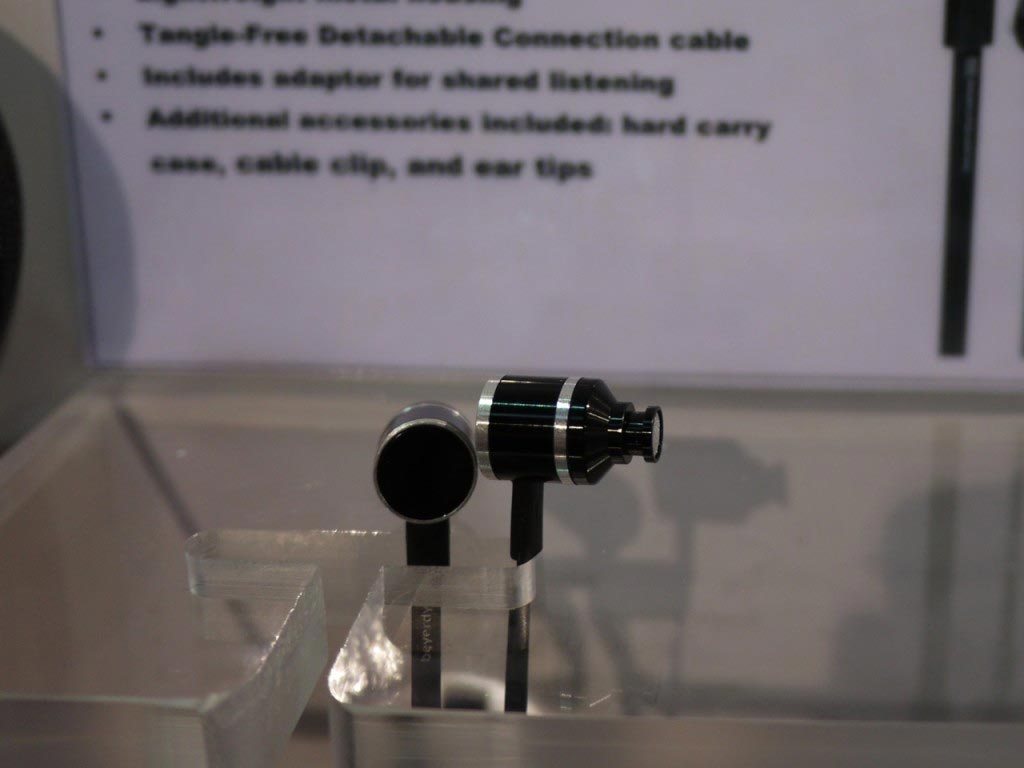
Beyerdynamic’s in-ears have undergone some updates, with the DTX 101 iE becoming the DTX 102 iE and two new higher-end models introduced – the DX 120 iE and DX 160 iE. I tried the DTX102, which sounded pretty much the same as the DTX101 I reviewed a while back, and the DX 160, which sounded clearer and less congested but overall not too different from the 102. The housings of the DX 160 are larger and to me look more generic compared to the compact shells of the DTX 102. Not much additional info is available on them but assuming these will be priced well above the $100 DTX 102, I would give them a pass.
FiiO
I stopped by the FiiO booth for a little while. No one at the booth spoke much English but they were happy for me to try the X5 and their amps. Unfortunately the “Made for Android” FiiO E18 “Kunlun” DAC did not want to work with my Nexus 5 and no one at the booth could figure out why. No matter, it sounded quite good as a standalone amp and felt great in the hand. It’s got a pretty large footprint for a portable amp but with high-end smartphones getting larger and larger that’s certainly not without merit.
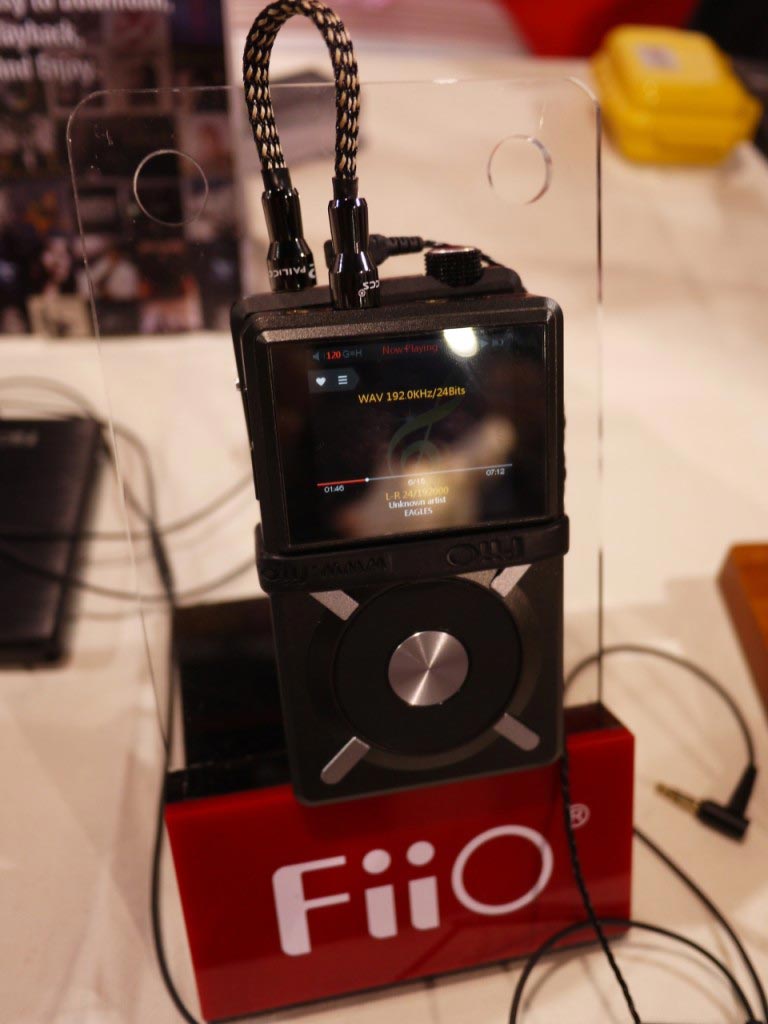
I found it interesting that FiiO was supplying Dunu DN-1000 Hybrid IEMs for audition with their players – these earphones are not ideal for the purpose, I think, as they are far from neutral. I’m familiar enough with the DN-1000 to say that it sounded quite good out of the FiiO gear on display, but I’m still glad I’d brought a few reference earphones of my own.
FiiO X5
The X5 is certainly a very impressive piece of kit – from a quick audition with my Unique Melody Miracle it seemed to be a competitor for the HM-901. FiiO had it loaded with some super hi-res 24/192 files and it sounded excellent with the ever-popular “Hotel California” from Hell Freezes Over. Unfortunately listening conditions weren’t ideal at the FiiO booth – it was in a rather loud section of the show floor and even with the UM Miracle some outside noise was leaking in. The interface looked pretty good for an audiophile DAP – the X5 won’t be confused with an iPod any time soon but it seemed more polished and a touch more responsive compared to the HM-901.
Polk Audio
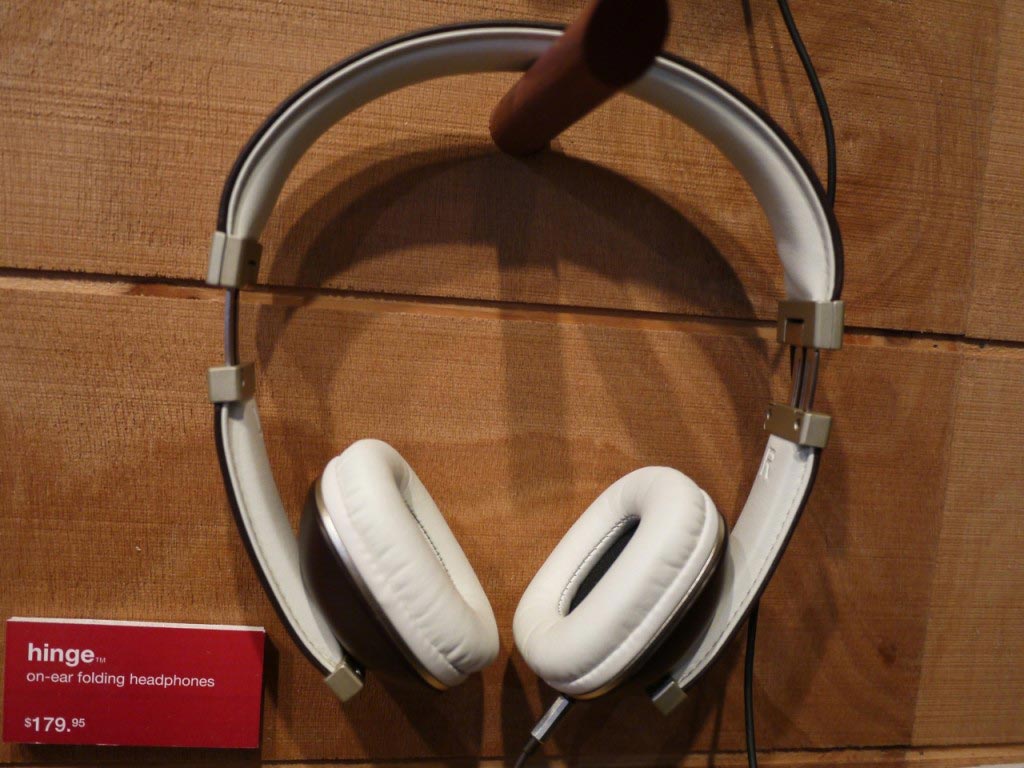
The Polk Audio booth was serving fresh coffee and Comply eartips. I took a listen to their new fashion-forward “Heritage Collection” consisting of one on-ear, one over-ear, and two in-ear headphones.
Polk Audio Hinge
The Hinge is the on-ear model in Polk’s new Heritage Collection. Though the styling doesn’t necessarily appeal to me personally, it is a good-looking set with a rather more mature aesthetic than the average $180 on-ear can. A 3-button Apple remote comes standard and the headphone folds up for storage. It fit me rather well and sounded rich and full, but was a little too muddy next to the slightly pricier Buckle model.
MSRP: $179.95 | Manufacturer’s page
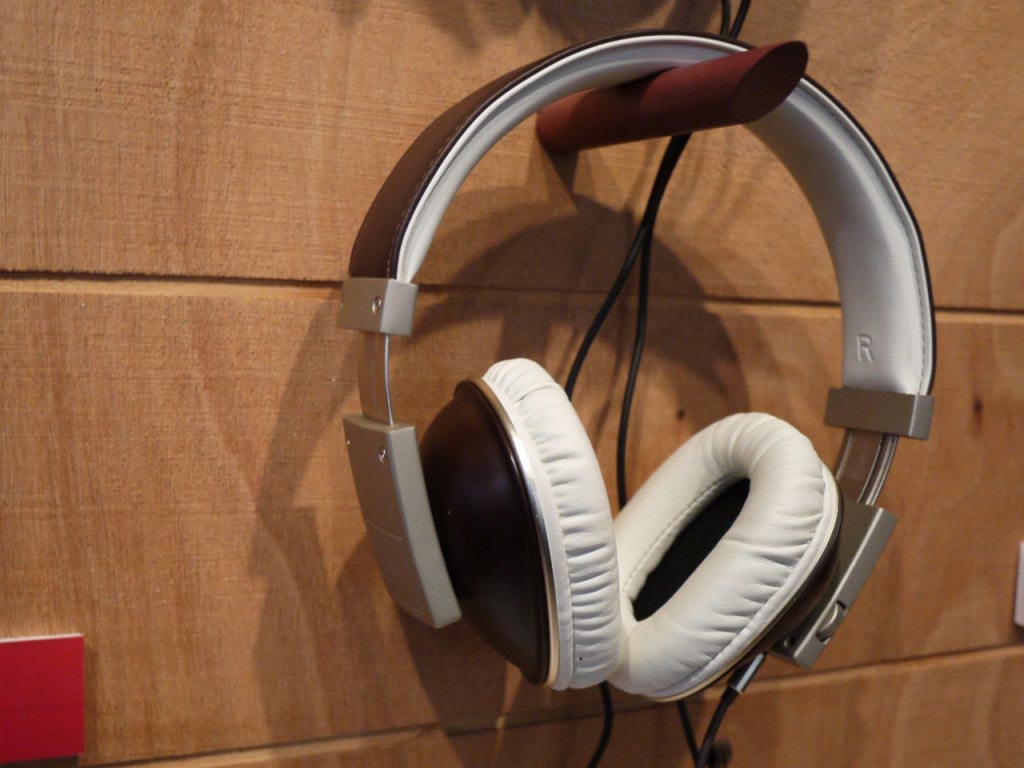
Polk Audio Buckle
The Buckle is a compact over-ear headphone featuring a similar design and construction to the on-ear Hinge. Again, I’m not a huge fan of the aesthetics but I do like the fit and finish. Interestingly, the controls and microphone on this model are built into the headphone itself, in the form of a toggle on the headband. Unlike the Hinge, the Buckle does not fold up but it does boast better audio quality. Indeed, the Buckle sounded rather decent overall – mid-recessed and a little veiled, but punchy and not lacking in treble presence. I would still rather listen to the slightly more expensive Sennheiser Momentum over-ear, but that’s hardly a reason to discount the Buckle altogether.
MSRP: $249.95 | Manufacturer’s page
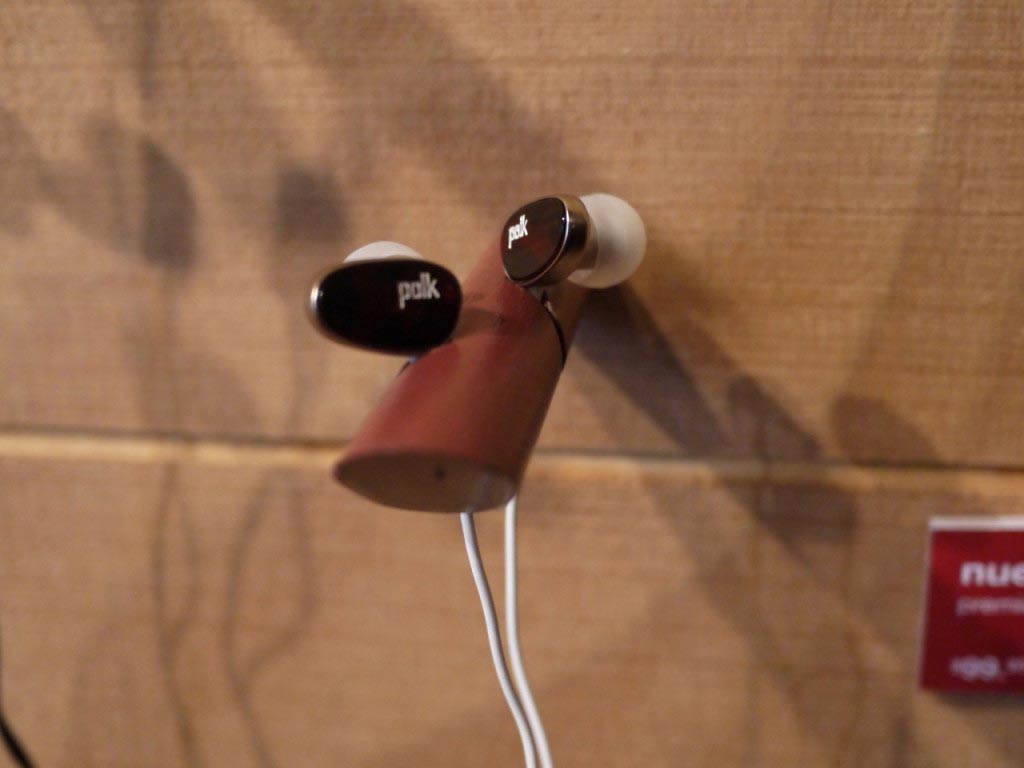
Polk Audio Nue Era
The entry-level Heritage in-ear boasts 5.5mm dynamic microdrivers and a unique form factor. The sound is colored compared to the higher-end Nue Voe model, with enhanced bass and a warmer tonal character, but didn’t seem bad for the price – at least on-par with the ever-popular Klipsch Image S4. A 3-button inline remote and microphone come standard.
MSRP: $99.95 | Manufacturer’s page
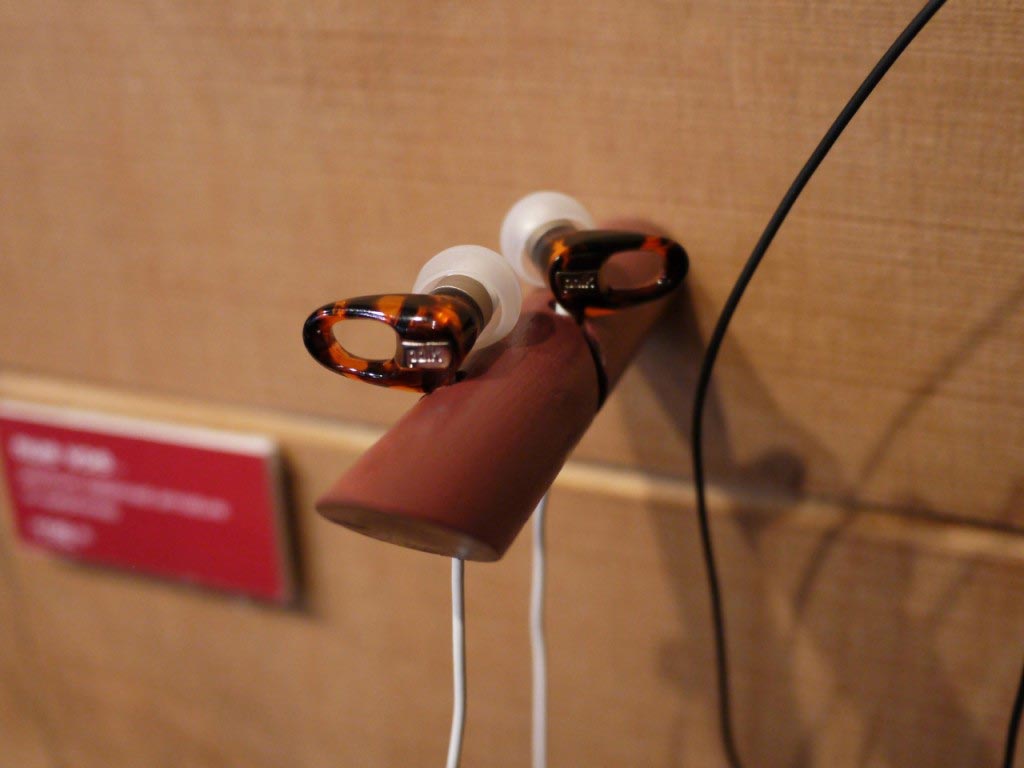
Polk Audio Nue Voe
These balanced armature earphones sounded the best of the bunch and were small, lightweight, and comfortable. As with the Nue Era, a 3-button remote comes standard but the Nue Voe is lighter and more unique-looking. I thought the tortoise shell finish was unique and cool (which probably means it isn’t). Sound-wise these were pretty neutral and certainly more accurate than I anticipated. I’m not going to claim that I know how the Nue Era measures up to other mid-level balanced armature earphones based on my short audition, but the BA drivers certainly put it among the more accurate sets I heard at the show and make it worth a second listen.
MSRP: $199.95 | Manufacturer’s page
That’s it for round two of our CES 2014 headphone coverage. Round three includes AudioFly, Sennheiser, Marshall Headphones, and others, and can be found here.
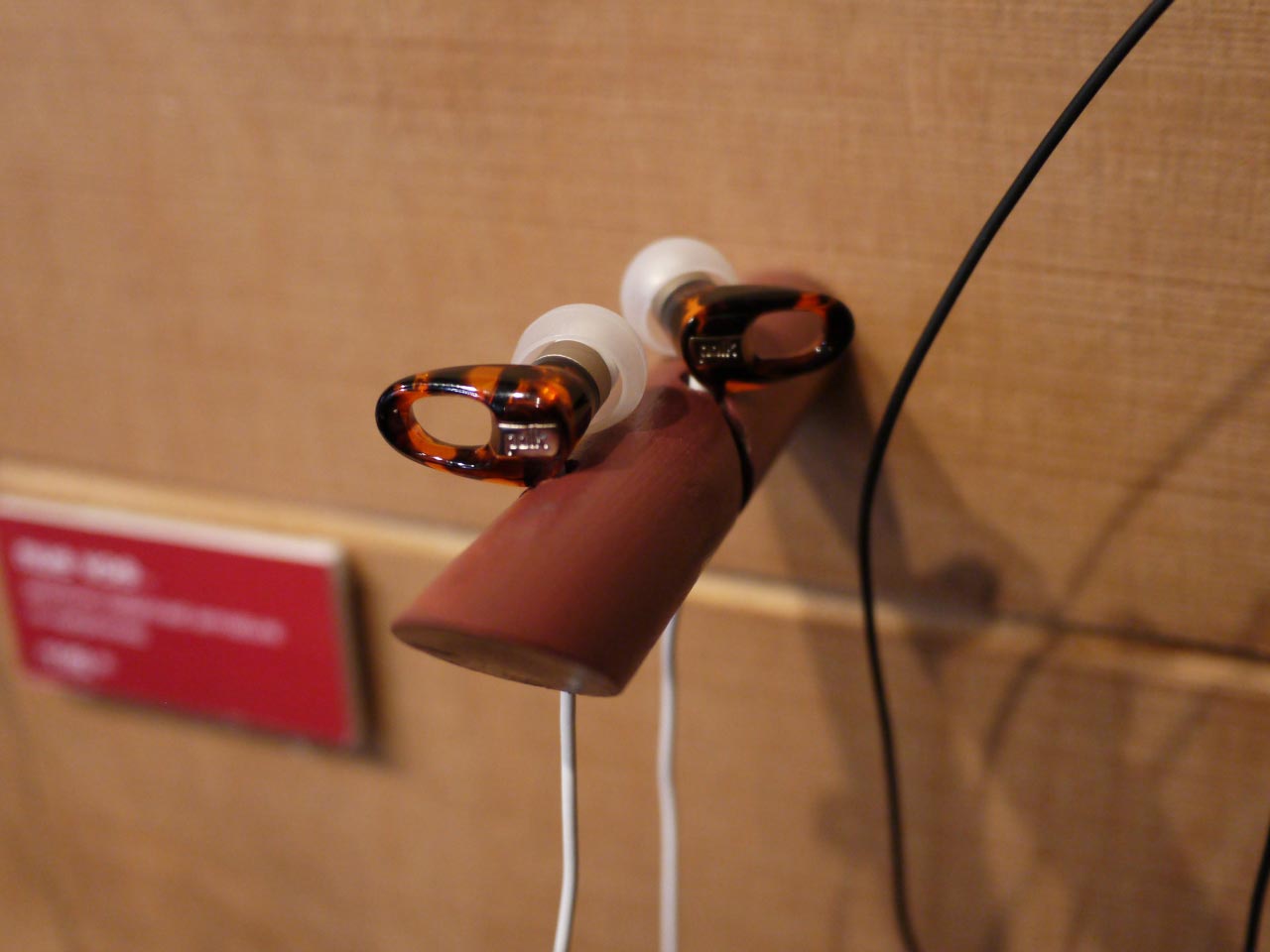


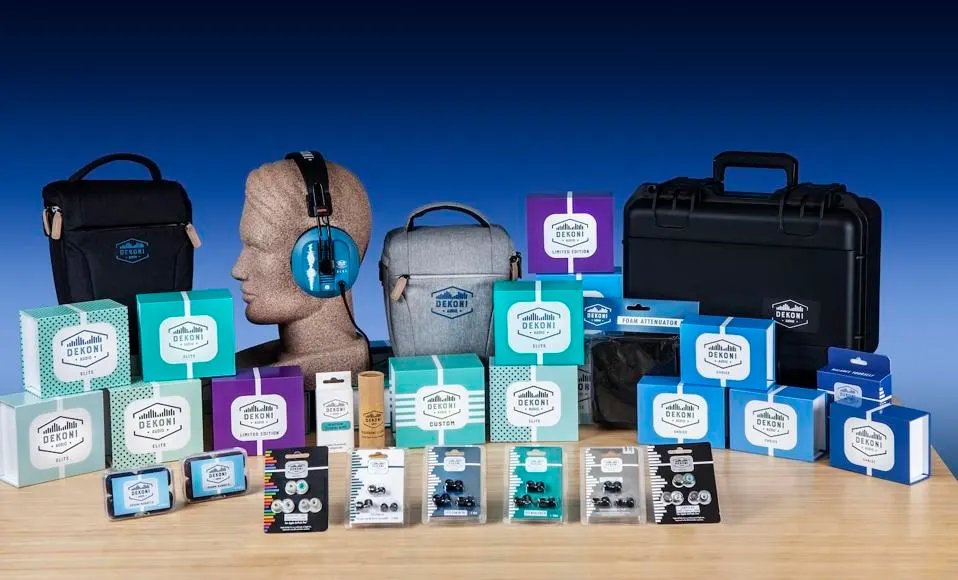
8 Responses
I hope so!
Then hopefully you will get a listen later down the line and post your comments.
You know, I didn’t really try to demo any amps (STAX aside) because the nature of the show is a little prohibitive of that. In addition to the problem of the overall noise level (most booths except Sennheiser and STAX didn’t have an enclosed listening room) to properly demo an amp I would have to have headphones I’m familiar with (didn’t have my HD600 with me), my own source and tracks, etc., etc. This is easier to do at audiophile shows like canjam but at CES it makes it pretty much impossible to gleam any meaningful amp impressions.
When you were at the Beyerdynamic booth, did you get a chance to view or listen to their new DAC/Amp? (I think it is the A 200)
Honestly I have no problem with storage with my HM-901 – the 128GB SD makes whatever internal storage my old players may have had negligible. It even makes things a little easier in terms of file management – no need to worry about multiple file locations. I remember when I had the Nationite S:Flo2 it would often fail to integrate the contents of the SD card with the track database from the player’s own memory. But then, that was just a poor firmware design.
Oh and my scale doesn’t really go up high enough for STAX headphones 😛
Wow. Fiio seems set to shake up the Portable Source world again.
Although the lack of any internal storage is frown worthy.
I remember a Fiio and Dunu joint product lauch. That should explain the pairing. (Athough I thought they’d demo the DN2000)
The Stax gets a 10/10 😛 ?
It was the SRM-727II. I probably should have mentioned that.
As for the SR-003, it’s certainly a very unique earphone with some great qualities and it is “cheap” for a STAX product but I think its appeal is limited. It is a good intro in the sense that it shares the STAX sound (especially in the midrange) but I almost feel like its quirks might turn someone off from moving up in the STAX line. I guess what I’m trying to say is – taken for what it is, it’s a good intro but I think the entry-level SR-207 or 307-based home listening rig would be much better still.
You finally listened to Stax :).
* Which Stax amp was paired with SR-009 and SR-007 MKII?
* Would you say that SR-003 MKII provides a good introduction to Stax sound (at an affordable cost)?
You have got me interested in the X5 as well.